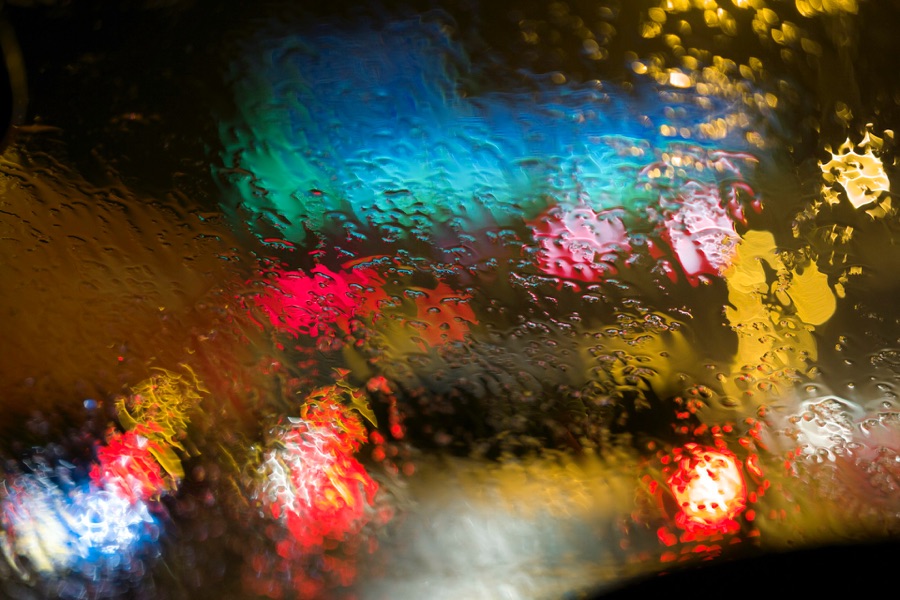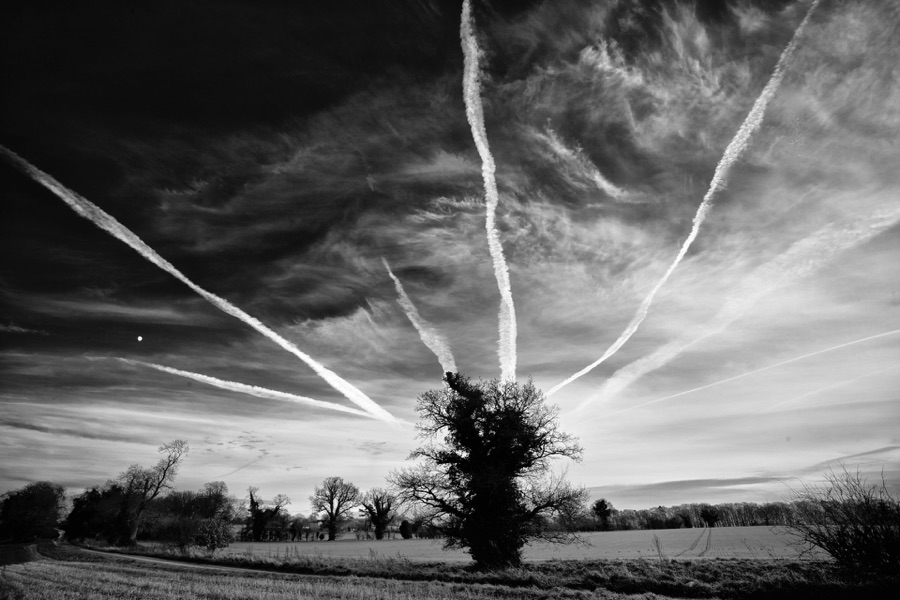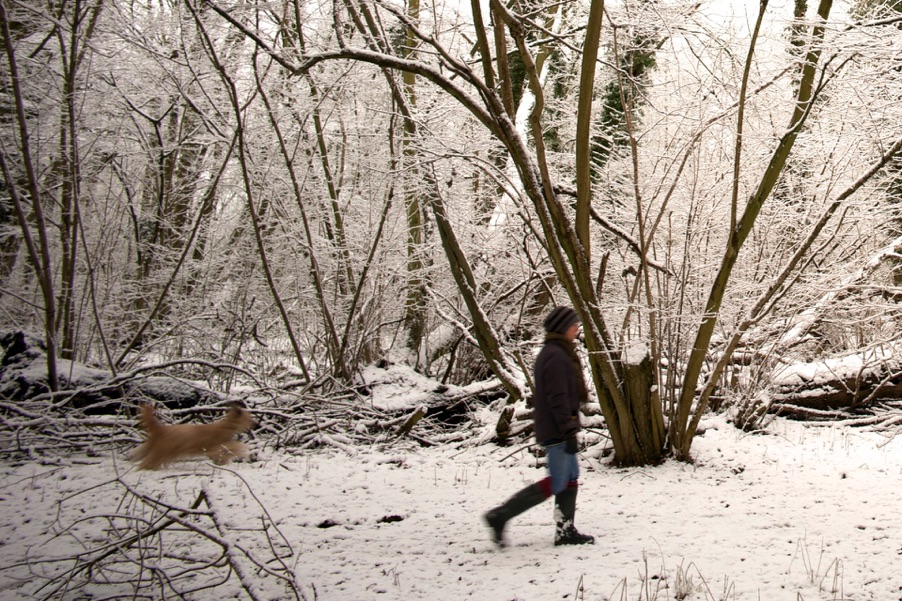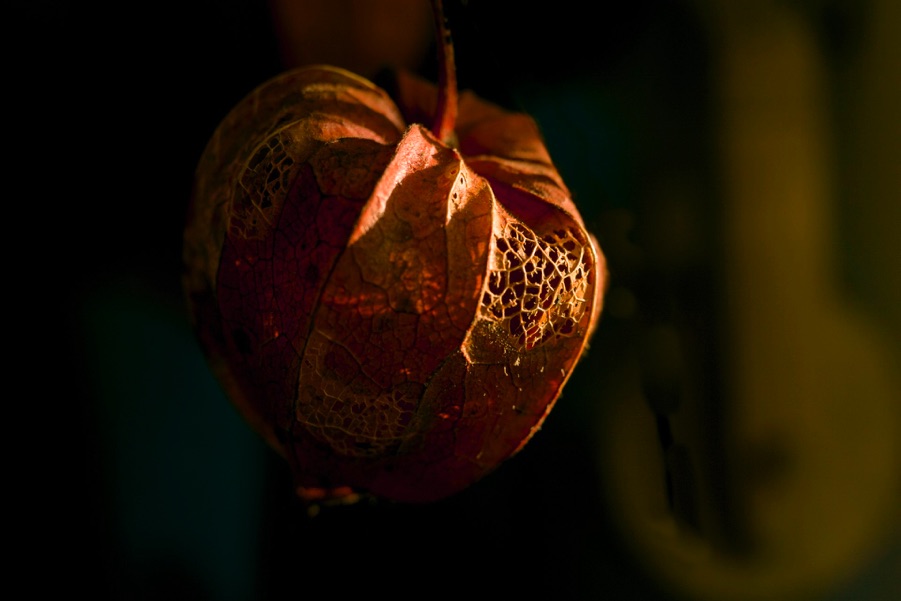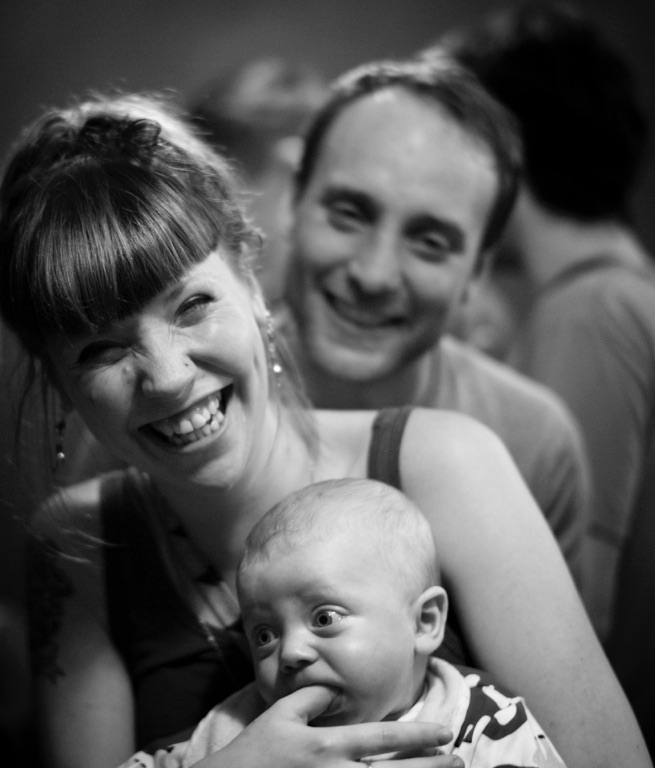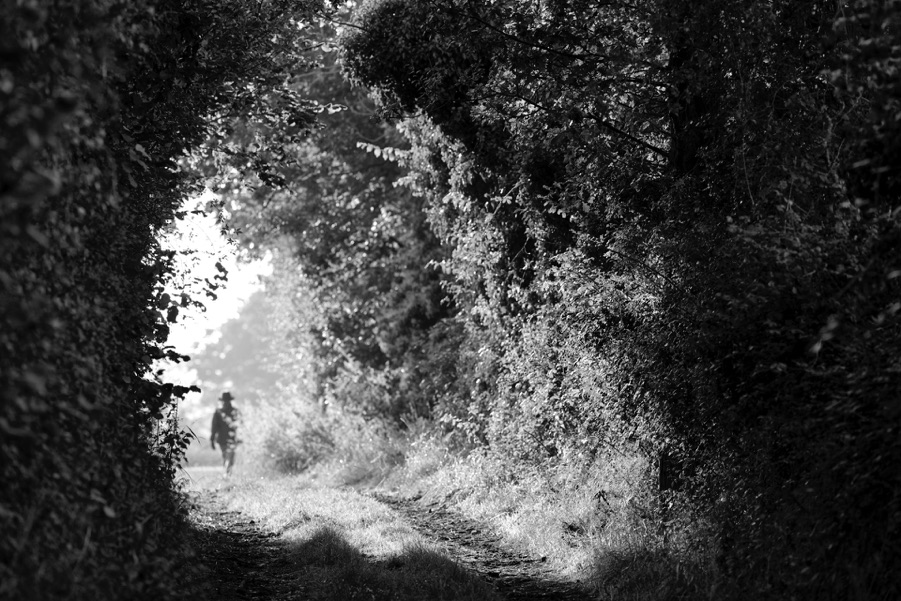Testing the Leica M (240)

I’ve spent the last few months getting to grips with the new Leica M. The camera was announced at Photokina in Cologne in September 2012. I was on holiday at the time and couldn’t attend. However, I had an invitation to visit Leica and look at the new camera a few weeks later. I was allowed to take away a prototype together with the sublime 50mm Summicron Aspherical.
Driving to and from Solms it rained and rained and rained - visibility was terrible, and there were traffic jams everywhere. One of the very first shots I took with the new camera was on the M25 very late at night on the way home.
M25 traffic jam with sleet. Leica M(240) Leica 50mm Summicron Aspherical ISO 1000
The camera was especially exciting, as I felt I had been involved in it from really early in it’s life. I can clearly remember the surprise and shock when Stefan Daniel asked me whether I thought it should have video; I was having dinner with Stefan and Jesko von Oeynhausen in Wetzlar sometime early in 2010. It seemed such a radical departure, there was even discussion of the pros and cons of a touchscreen LCD!
Leica was really listening to what their users were saying. Michael Reichmann at Luminous Landscape had posted his Open Letter To Leica in January 2010, and Sean Reid from Reid Reviews had set up a questionnaire the results of which he published in an article on his site: Thoughts About a Future Leica DRF.
In the meantime, mirrorless interchangeable lens cameras had become all the rage. Olympus and Panasonic made great steps forward with the µ43 cameras, Sony brought out their NEX range, and Samsung, Canon and Nikon were not far behind. Then came Fuji with the X-Pro 1, everyone was buying classic lenses and using them on their new cameras with adapters: The cry on the internet for a Full Frame mirrorless camera became almost deafening - with Sony generally expected to be first. It only gradually became obvious that, with the new M, Leica had actually done it.
This article is not meant to be a review. There are others better equipped to do that, and you should be aware that on the one hand I’m not an independent voice; as always, my loyalty as a camera tester is to Leica: If I find a problem, then I tell Leica, If I like something, then I tell everyone else! On the other hand I hope that I’m an honest correspondent, and I won’t say anything that I don’t really believe to be the case.
Introduction
I’m not going to go into great detail on features because they are available in many places not least the Leica Camera Website where you can download technical data and a brochure. I’ll deal with the new features (Live view, Video and the EVF etc.) later on in the functional discussion, but I think that it’s worth making a note of the items which Leica have updated from the M9 and which relate to the camera as a basic rangefinder camera:
-
-
•Faster processor
-
•Larger buffer
-
•Higher resolution LCD
-
•Weather sealing
-
•Quieter shutter (without re-cock pause)
-
•Less shutter lag
-
•Better high ISO
-
•Higher Resolution
-
•Integrated thumb grip
-
•Improved ergonomics
-
•Improved Rangefinder design
-
•New Exposure compensation button (also known as the focus assist button)
-
-
These changes answer almost all the relevant criticisms of the M9 as a digital rangefinder camera. . . without taking anything away. It’s another example of Leica really listening to it’s customers, and actually doing something about it. However, unlike so many Japanese companies, they haven’t thrown out the baby with the bathwater by a complete redesign.
Having spent a lot of time talking with Leica (and asking them to add ‘features’) I’ve come to understand how absolutely determined Leica are to keep the fundamental use of the Leica M as a rangefinder camera as simple and consistent with old models as it’s possible to be. The menu of the new M is so similar to that of the M9 that it really takes no time at all to familiarise oneself: for instance, if you want to format a card it’s still two up presses and you’re there.
The Exploding Tree: Leica M(240) Leica Wide Angle Tri-Elmar at 16mm at f8 converted to monochrome with Silver Efex-Pro
The camera itself is both a giant leap forward, and a careful refinement of what was already there. Leica have listened to the ‘modernists’ and on the one hand they have added Live View, Video, an EVF, Focus Peaking and the other trappings of the Modern Mirrorless Camera. On the other hand they have stuck rigidly to the tradition of the Leica M - the camera can be used exactly as any M camera since 1954, ignoring all the new features. However, they have been listening, and they have incorporated almost all the small improvements which could be made to the M9 without compromising it’s original intention. The M gestalt has not been compromised, the simplicity remains.
Features
Don’t take any more photos : ISO 2000, Leica M(240) Leica 135mm Apo Telyt at f3.4
Feel, Handling and Use - as an M camera
There has been much talk about the camera being bigger than the M9. In fact it is around 100gms heavier, and about 0.6mm thicker (putting the base plates together, the M9 base plate is about the thickness of the metal narrower than the M). Of course, we’d all like it to be the same size as a classic M6, but the need to get the registration distance from the front of the sensor to the lens mount makes this virtually impossible. In practice the camera does feel bigger - but only if you have a really good muscle memory of the M9! On the plus side it also feels much more secure, the thumb grip is small, but it really does make a difference.
The back of the camera has changed a bit - the info button has been moved to the centre of the direction pad, which itself has been moved up and made smaller. I imagine this was to stop you pressing the right button with the ball of your thumb when shooting. the buttons on the left have become square, and there is a new LV button at the top - and the menu button has been moved from the top right. The biggest change is that the thumb wheel around the direction pads of the M9 has been moved to the new thumb-grip. this is a really excellent change - the proof of this is that it takes about 5 minutes to get used to it, and if you go back to the M9 it takes much longer to come to grips with the old wheel again. The new chrome coloured pad is metal rather than plastic; whether it should be silver is a moot point, but the whole feel of it is a great improvement, and being metal it probably won’t end up shiny and used looking in a few months.
Apart from the new Live View button, there are two other new buttons - the M button (movie) next to the shutter release on the top-plate. I’ve never pressed this by mistake when shooting, but I have taken some videos of the inside of my camera bag having left the camera switched on. I’d like to see an option to disable the LV and M buttons (classic mode). There is also the focus assist button on the front of the camera. In M mode this serves as an exposure compensation button.
Then there is the new shutter release. It looks just the same as the M9, but it certainly doesn’t feel the same! On every M9 I tried / owned, the 3 stage shutter release felt different, but what they all had in common was a gritty unattractive feel. The shutter release on the new M is silky smooth, and now it’s only 2 stage rather than three. This does take a little getting used to, but it’s only good news. The shutter noise itself is a revelation - when you’re shooting it sounds purposeful and delicious, for your subject it’s almost inaudible. We did a blind test around the dinner table - with an M6 classic and the new M. The ladies of the house had their eyes closed, but had to say which shutter made more noise - in every case they chose the M6 as the noisiest. Quite a surprise.
The new base plate has a nice round stud and a little bump at one end (rather like the film cameras of old). Inside it seems much more solid than the rather plasticky base of the M8 and the M9. The big new battery and SD card socket are at one end, the rest feels like a continuation of the body of the camera. Soft rubber seals in crucial places are evidence of the new weather sealing features
There are two handgrips, the shallower non-functional handgrip, and the deeper GPS handgrip which has various sockets and the GPS sensor itself. I’m not usually a great advocate of hand grips (never used one on the M8 or M9, despite having paid for them!). However, I like to know where I’ve been, and I find I’ve been using the GPS grip quit a lot. I did try the screw in finger grip, and thought it seemed fine, but I haven’t had enough time with it to make a real decision.
Leica have changed to using electronic framelines, and have changed the rangefinder default distance to 2m (as per the much loved M8.2 framelines). They have also removed the Frameline lever from the front of the camera. I agree with the general consensus here, for most purposes the framelines are much more accurate than those on the M9. I rather regret the loss of the lever from the front of the camera (on aesthetic grounds), but I have to admit I never used it. the new framelines are really a lot clearer. You can choose to have them in red if you want: I think this is the only really unnecessary option in the new menu system!
Skipping along: Leica M(240) Leica 24mm Summilux at f6.8 at 1/45th second
Feel, Handling and Use - as a Mirrorless Camera
I’m a firm believer that Leica cameras should all have their own niche (how can they compete head to head with Nikon, Canon or Sony?) As a digital rangefinder the new M is not really in competition with anything else available. However, by adding Live View, Video Mode and an EVF, Leica have produced the first fullframe interchangeable lens mirrorless camera - something that has been anticipated for some time.
In my mind there is no question that, with the M(240) Leica have produced the state of the art Rangefinder camera. It’s very hard to criticise it terms of operation or image quality. But how does it fare as a full frame mirrorless camera (a category where it’s unlikely to be alone for very long).
I’m very interested in this new type of camera, and I’ve spent a lot of time with mirrorless cameras from Sony, Panasonic and Olympus. µ43 has really come of age in recent months with excellent lenses (both prime and zoom). Built in image stabilisation and a multitude of 3rd party adapters means that you can attach virtually any lens to your OMD and produce great results. Sony have been a little behind with lenses and don’t have in-body image stabilisation, but they’ve produced splendid cameras with great sensors, and the adapters are available to attach any lens that might take your fancy. Focus peaking and very high quality EVF monitors with high refresh rates make manual focusing easy and very precise. Like most people I don’t like using an EVF as much as an optical viewfinder, but I think the problem is mostly emotional, the ability to see exposure, white balance and depth of field before shooting is a really valuable aid.
First of all the bad news. The M is no sports camera in Live View Mode: There is almost a second blackout after taking a picture in Live View (or with the EVF). Added to this the 30 fps refresh rate is slow enough to produce ‘tearing’ with moving subjects (or moving camera) especially with telephoto lenses. The lack of image stabilisation in the camera means that the focal length/shutter speed rule needs to be pretty closely adhered to. For street/candid photography the shutter lag in Live View means that the decisive moment may have long gone by the time the shutter has closed and opened again (mind you, this is true of live view in most dSLR cameras as well). Worth mentioning here that in ‘classic mode’ the shutter lag is even less than the M9.
The good news is that if you have taken this on board, then the M in Live View mode is a wonderful camera for considered photography. The focus assist mode is so very well thought out, you can decide whether to have focus peaking, and whether to zoom in to 5x or 10x. If you are using an M lens this can happen automatically when you refocus the lens. If you are using an R lens (or other 3rd party lens) then it will happen on pressing the focus assist button on the front of the camera; which falls perfectly to one’s index finger. Half pressing the shutter zooms out again. It works really well. Shooting with a macro lens handheld, on a tripod (or rested on your knee) with the articulating EVF is a positive joy, perfect focusing is almost unavoidable. I’ve been using a Leica 60mm Elmarit R lens for macro - I’d love to have the 100 APO, but it’s much bigger (and about 4 times the price!).
It also means you can use zoom lenses. The Leica 28-90 R zoom is a thing of beauty and wonder - quite the nicest zoom I’ve ever used. Sharp to the corners, even wide open. With the grip it handles very nicely on the M.
Image Quality
ISO 1250 Leica M(240) with the Leica R 60mm macro Elmarit at f2.8
Methodical testing of the image quality of any camera is fraught with difficulties. DxO will come out with their sensor statistics, Sean Reid has done a meticulous report on the differences between the M DNG files and those of the M9, Ming Thein has made a detailed anlalysis on his excellent blog, dPreview will add sample images to their database. I have enough of a scientific background to understand that it’s well outside my capabilities to produce a relevant analysis of the image quality of the new M in comparison with other cameras. In my opinion the real uncontrollable variable is the subject: it’s all very well doing comparisons of a particular scene in particular lighting (and it may be very useful). But I don’t shoot specific scenes in specific lighting!
On the other hand I’ve shot something like 10,000 images with the camera, both in RAW and JPG mode, and I have a definite feeling as to how the sensor actually performs. I’ve shot with three different cameras and 4 different firmware variants. Things have changed, artifacts have been dealt with, the noise has been improved at high ISO, the White balance has been adjusted. But in the last week, I’ve been shooting again with the original prototype I collected from Leica in October, and it’s brought home to me how good the camera was in the first iteration.
There has been much discussion about the relative benefits of CCD and CMOS sensors on the internet forums. I wish I could get a real handle on the differences, but I’m bound to admit that, to my eyes at least, it’s much more to do with how the firmware is adapted to take advantage of colour or noise.
My observations on the image quality of the new camera are therefore very much subjective - of course I’ve done controlled comparisons between the M9 and the new M at base ISO and also at higher ISO, they’ve helped me to come to my conclusion, but they aren’t useful for publishing. My feeling is that the new camera has about 1.1/2 stop improvement in high ISO noise performance (so that 1250 ISO was the most I would happily use on the M9, and 3200 is fine on the new M). As far as colour is concerned, I think that at base ISO the M is a little richer than the M9 (with a fair amount more dynamic range). At higher ISO I think it’s altogether better, especially skin tones, which I always found unkind on the M9 above 1000 ISO. Leica have made a real effort with the jpg files, which are much better than those of the M9, and you can use the settings to show up on the LCD (even if you are only shooting DNG). I’ve processed the DNG files in Capture One, Lightroom and Apple Aperture, (none of which have proper colour profiles yet). My instinct is that they are noticeably more malleable than those of the M9; they take a lot of bashing!. I’ve also used Silver Efex-pro for black and white conversions, which have worked out pretty well.
I’ve written something like 20 lines on Image Quality - I wonder how many thousands of lines will appear on the internet over the next few weeks! For my money the camera takes advantage of the wonderful Leica lenses, and the files are eminently flexible. The high ISO is quite enough for my needs with fast Leica lenses. I don’t need any more - for now at least! (let the pixel peeping begin!)
Conclusion
Happy Family: (get your thumb out of my mouth!)
ISO 3200 Leica M(240) with Leica 50mm Summilux at f4 converted to monochrome with Silver efex-pro
First of all an apology. I haven’t even mentioned the video capabilities of the M. Of course I’ve played with it, but I’m simply not technically competent to comment on it. I have no talent shooting video, and no terms of reference in terms of quality - so I feel I’m better off keeping my mouth shut!
I think it’s easier to discuss the new M(240) as two cameras.
The First Full Frame Interchangeable lens Mirrorless Camera
A brave move from Leica, and an interesting camera. The facilities and firmware have been wonderfully well thought out, simple, and absolutely Leica in character. In this mode the camera is no speed merchant, but if you have the time and the lenses, then it produces excellent results. You can hand hold up to about 200mm in decent light, and after that it works really well on a tripod (the R adapter has a built in tripod connector). The Leica 28-90 R is particularly successful as a travel/walkabout lens.
The Latest Successor to the M3
I think it’s a total success. The M8 and M9 were excellent cameras - with much to love and excellent Image Quality. The new M is a joy - the ergonomics are subtly improved, the general responsiveness and speed is a real revelation. Of course, it isn’t perfect, (which camera is?), but if you want to catch decisive moments with lovely lenses and a delightful camera then, for me, for now, this is it.
Leaving - you can keep your hat on.
ISO 200 Leica M(240) with Leica R 180 f2.8 APO at f2.8 converted to monochrome with Silver efex-pro

I’ve put together a gallery of images taken over the last few months with various lenses in different situations. For me the proof of a camera is if it allows you to take the pictures you see without getting in the way. There are images from Copenhagen, Venice, Cornwall, Sauze d’Oulx (Italy) and Suffolk. Click on any of the images to take you to the galleries.
Finally - the GPS - this is just a little image of the map information relating to our skiing trip - of course it can be more detailed than this and you can zoom in to get more dots, there are also other ways of doing this, but I thought it was fun.
